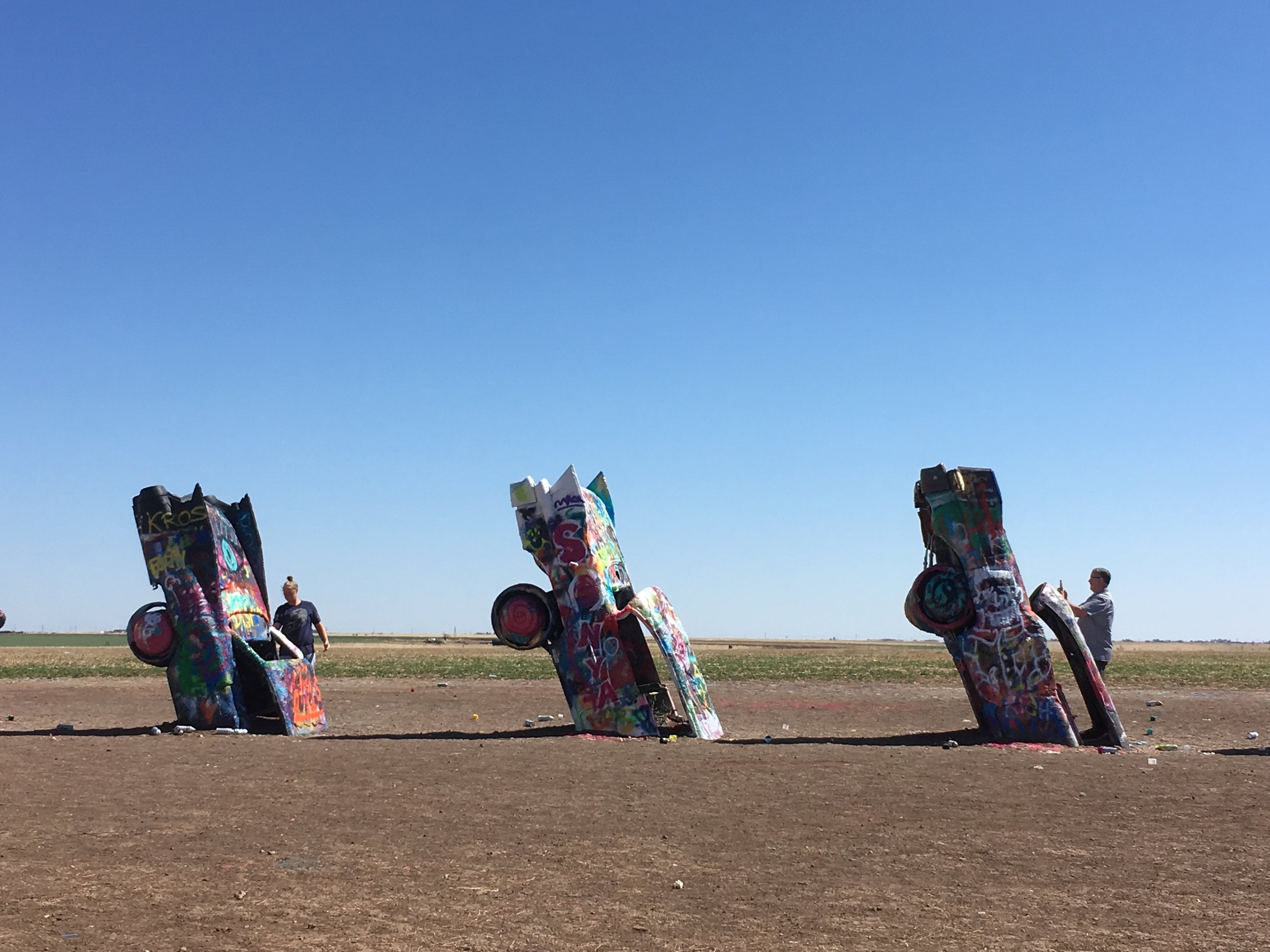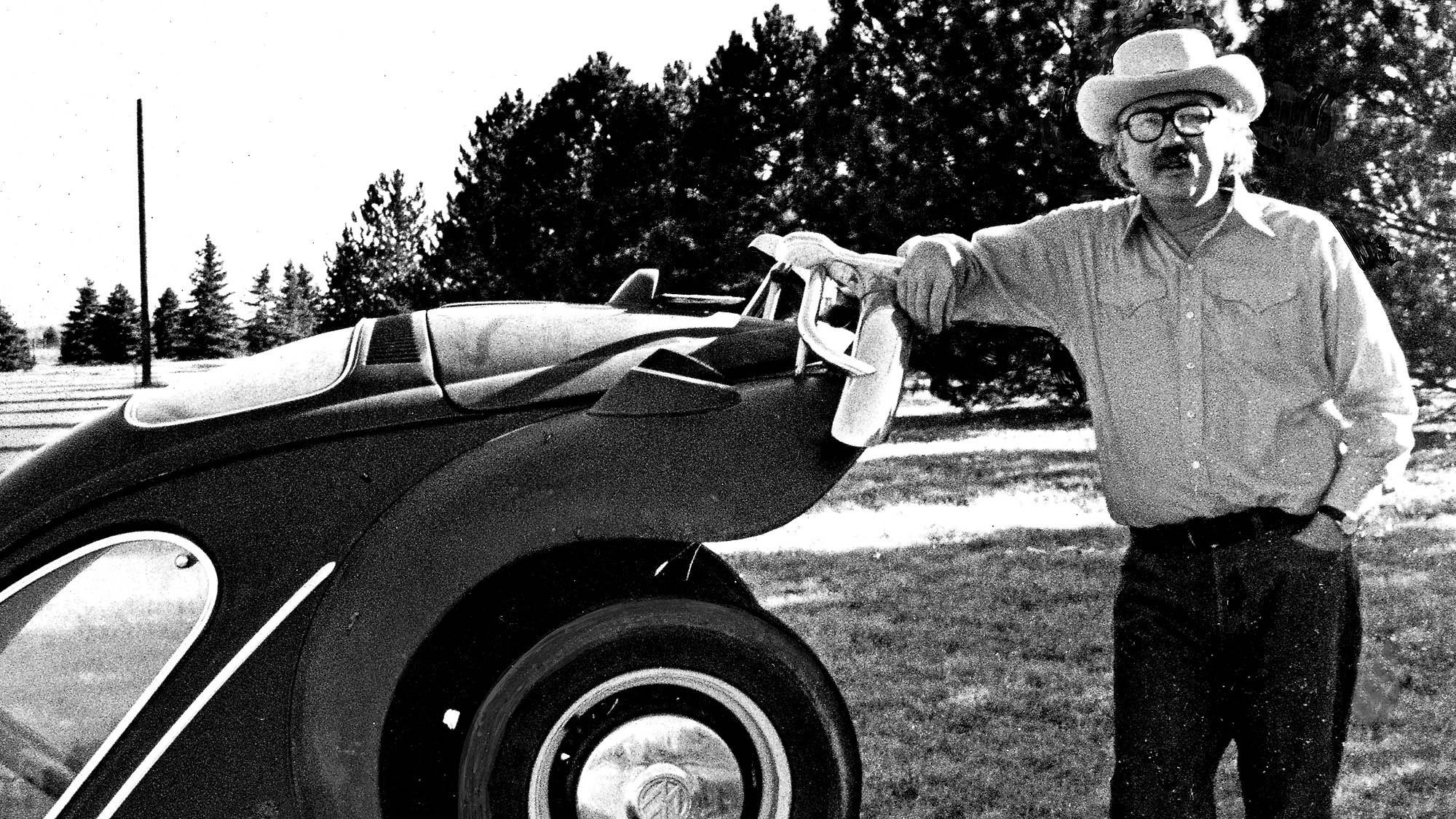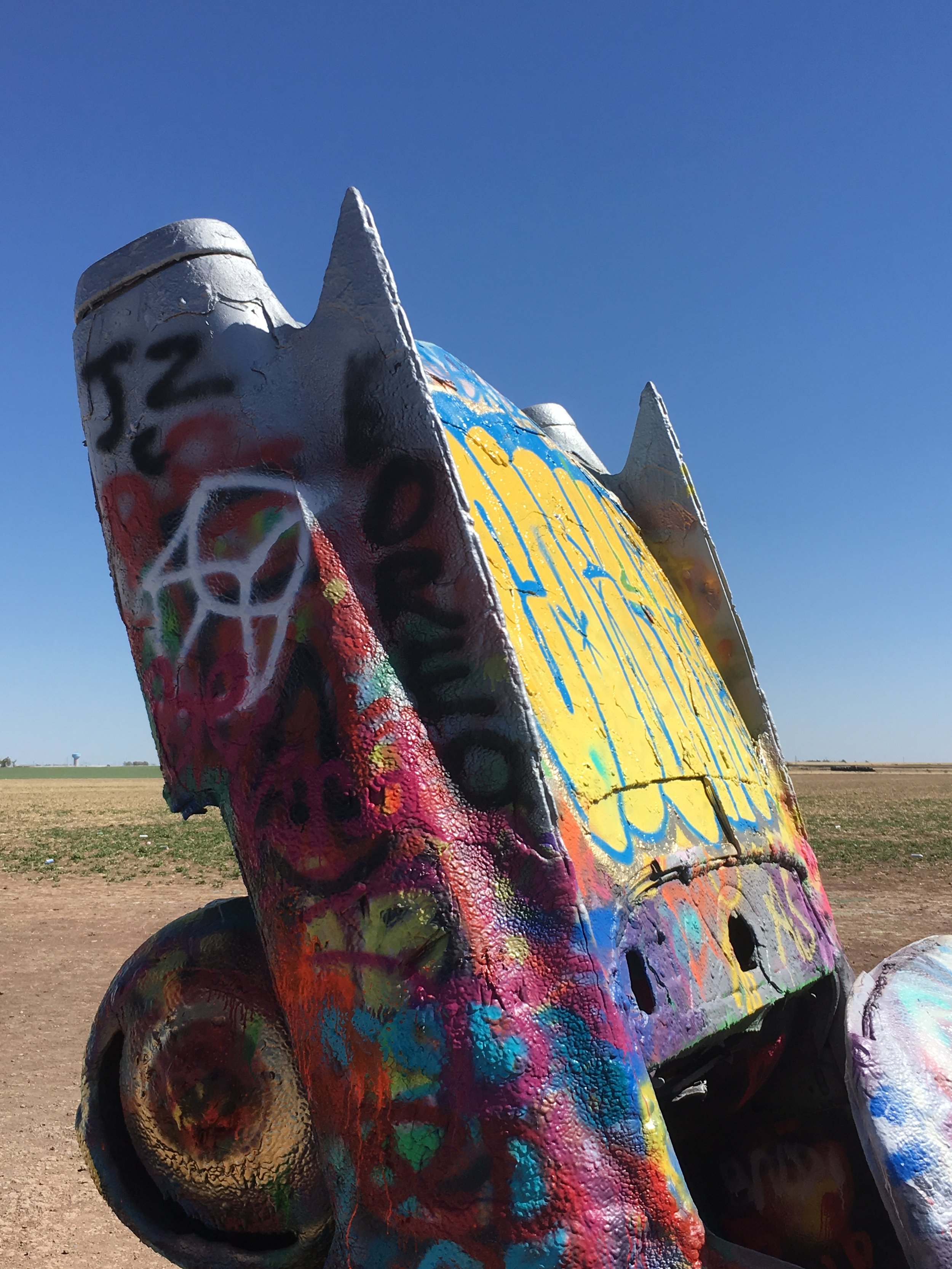DOWN AT THE CADILLAC RANCH
AMARILLO, TX -- Across the beautiful boredom of the Texas Panhandle, not much disturbs the pancake of land. Beneath cloudless blue stretching from horizon to horizon, anything vertical stands out. Wind turbines. A grain elevator. Billboards for DQ -- 35 miles; Stuckey's - 65 miles; 115 Miles Ahead! -- a 72 oz. steak, FREE if you eat it all. My wimpy rental car skims along the sagebrush ocean. And then...
Just off Interstate 40, a cluster of vehicles lines a parallel road. Vans. Pickups. SUVs. License plates read Colorado, Maryland, Kansas, Florida. . . And out across the plain stands the roadside attraction.
Installed in obscurity, considered a joke, Cadillac Ranch has become "arguably the best-known public artwork in America." Ten Cadillacs, buried fins skyward, now attract hundreds each day from across America and around the world. Some come to admire, some to ponder installation art. But most come to paint.
Beside each car, spray paint cans litter the ground. Grabbing a can, shaking it, then spewing its contents, amateur artists drench another car in psychedelic colors. But though the Ranch is now graffiti-art, it began as homage to an American love affair.
"By 1959, Cadilacs had fins that were forty-two inches off the ground," wrote Chip Lord. "This made a big impression on three teenage boys."
Children of the 1950s, Chip Lord, Doug Michels, and Curtis Schreier followed the Summer of Love to San Francisco. Meeting over common interests -- architecture, customized cars, and pop culture -- they formed Ant Farm, calling it "an architecture group that was more like a rock band.¨ By the early 1970s, Ant Farm was having fun with American pop. The fun included:
-- an enormous plastic bubble that invited viewers into a "Clean Air Pod;"
-- a Media Van packed with video equipment and other "hardware reminiscent of a B-52;"
-- a House of the Century like something out of The Jetsons.
At their space-age house near Houston, Ant Farm met Stanley Marsh 3. The eccentric millionaire, who had opened his Amarillo ranch to other installation artists., invited Ant Farm to propose a project. In February 1974, Michels drafted blueprints for a "Cadillac Ranch" with up to 20 cars buried at an angle mirroring Egypt's pyramids. Marsh offered Ant Farm several strips of land. They chose the strip closest to the highway -- "and not just any highway," Michels noted. "Route 66!"
Marsh gave Ant Farm $3,000 for ten cars. Visiting junkyards and used car lots, the project came in under budget. In June 1974, a few months after the Arab Oil Embargo created long lines at gas stations, the planting began.
A backhoe dug trenches, then lifted each car and slid it into place. Three Cadillacs were installed on the first day. The work continued. On the summer solstice, 200 attended a grand opening featuring the shaggy-haired artists in tuxedos, gin and tonics, guacamole. With the champagne christening of a beige 1949 Club Sedan, Cadillac Ranch was open for business,.
Texas was not amused. Nor was America. Cadillac Ranch drew art aficionados, but little attention. Then in 1980, Bruce Springsteen wrote his tribute:
Well, there she sits, buddy, just a-gleaming in the sun
There to greet a working man when his day is done
I'm gonna pack my pa and I'm gonna pack my aunt
I'm gonna take them down to the Cadillac Ranch
Springsteen's album "The River" folded out to reveal fins planted on the plains. Postcards spread the image worldwide. Here was wacky, car-crazed America, gleaming in the Texas sun.
"Ant Farm presented a wonderful alternative model where you can love cars and critique them," wrote Rebecca Solnit, "where the private passions and public issues can hit a kind of merge lane."
In the mid-1980s, the graffiti began. Some called it vandalism, but Ant Farm, which disbanded in 1978, welcomed it. "If it had been sited in a remote place," Chip Lord said, "it would be pristine today."
"And no one would have seen it," Doug Michels added. "We wanted it to be an interactive monument, so people could express themselves."
Thanks to Cadillac Ranch and their next project, Media Burn, which drove a Cadillac through a pyramid of TVs, Ant Farm belongs to modern art history. Critics write about them using terms like "post-Freudian" and "cultural production."
Meanwhile back at the ranch (sorry, couldn't resist), spray paint drips off the cars. But there they stand, hollowed out, hunkered down, "the hood ornament of Route 66" as Michels called them.
It’s a short drive from Cadillac Ranch to Combine City. Sadly, not a single person is there to see one farmer’s answer to the world famous Cadillacs.
But the next morning, driving back toward Albuquerque, I glance over. There are the fins, and there are the drivers pulling over to pay homage to an American love affair.














